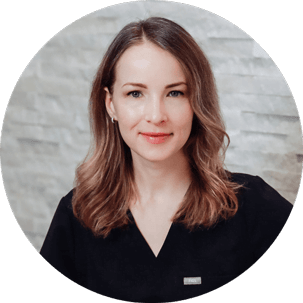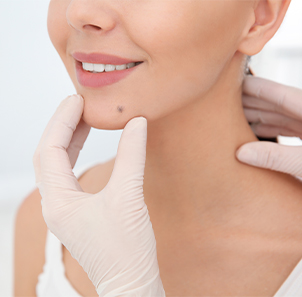Beneath the Surface: Understanding and Treating Benign Skin Lesions with the Guidance of a Board-Certified Dermatologist
Our skin is a remarkable organ, protecting us from the outside world while also being a canvas for various imperfections, some of which offer character to our appearance at times. These can show up as benign skin lesions, which are harmless growths that range from moles and skin tags to seborrheic keratoses, cherry angiomas, and sebaceous hyperplasia. While these lesions generally do not pose any health risks, some patients choose to have these lesions removed. For aesthetic reasons, there might be a large amount on the face or in areas like the underarms, neck, or groin that can be uncomfortable with friction from clothing and jewelry rubbing against them.
In this blog post, we delve into the different types of benign skin lesions, explore the methods for removal, and emphasize the importance of seeking the expert care of a Board-Certified dermatologist for such procedures.

Author:
Dr. Yulia Velykoredko
Understanding Benign Skin Lesions
Benign skin lesions are non-cancerous growths that can appear anywhere on the body. While most are harmless, it is essential to have any new or otherwise concerning lesion examined by a primary care provider to rule out any potential risks.
The characteristics for these lesions are:
- Moles (Nevi): These are common skin growths that can be flat or raised and can range in color from tan to dark brown. They often have a well-defined border and can vary in size. Moles can be present at birth or develop over time due to sun exposure.
- Skin Tags: Skin tags are small, soft, flesh-colored growths that usually hang off the skin on a thin stalk. They are often found in areas where skin rubs against skin, such as the neck, armpits, and groin.
- Seborrheic Keratoses: These are typically round or oval growths that can range in color from light tan to black. They have a waxy, scaly, or slightly elevated appearance and can resemble warts or moles.
Methods for Skin Lesion Removal
When considering benign skin lesion treatment, we emphasize consulting a Board-Certified dermatologist because we possess the medical training and expertise to diagnose the lesion and recommend the most appropriate removal method. Some common techniques employed for benign skin lesion removal include excision, cryotherapy, electrocautery, and laser therapy. Each method is tailored to the specific characteristics of the lesion and ensures optimal outcomes with minimal scarring. We generally warn that the healing or ‘downtime’ involved after lesion removal is about two weeks.

The Importance of Dermatology Experts
While it may be tempting to attempt self-removal of benign skin lesions using over-the-counter remedies or at-home, internet techniques, we strongly advise against doing so. Seeking the expertise of a Board-Certified dermatologist ensures proper diagnosis, personalized treatment plans, and reduces the risk of complications. Dermatologists are well-versed in identifying potential skin concerns and can distinguish between benign and cancerous growths, providing the necessary reassurance and peace of mind.
Furthermore, dermatologists possess the knowledge and skills to perform skin lesion removal procedures with precision, minimizing scarring and ensuring optimal outcomes. They have advanced equipment and techniques that are essential for addressing complex lesions that may have more happening beneath the surface, such as a cyst that requires advanced excision techniques.
When it comes to benign skin lesion treatment, seeking professional guidance from a Board-Certified dermatologist is paramount. We encourage you to contact us for Surgical Dermatology if you would like to schedule a benign skin lesion removal. For suspicious lesions, please see your primary care provider for initial assessment as a referral may be required.

